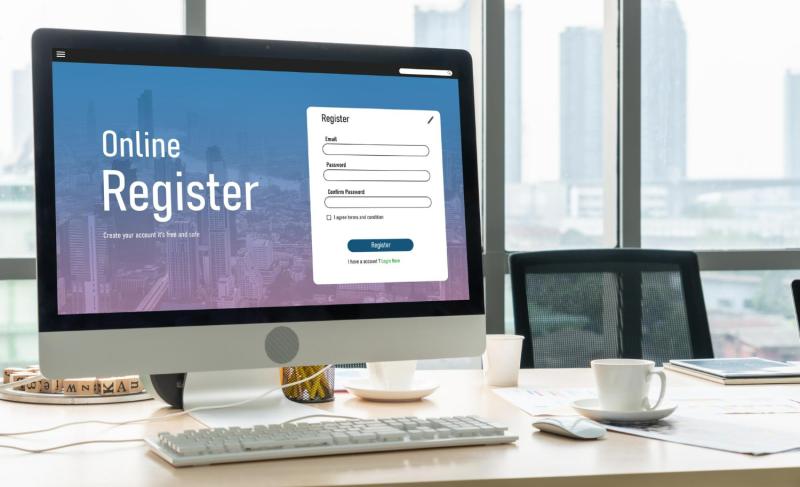8 Best Event Registration Practices for Organizers

Event registration is a pivotal part of the event planning process. It serves as the gateway to your event for potential attendees. Therefore, it's necessary to ensure a smooth and successful registration experience and for that, event organizers must adhere to best practices for event registration that streamline the process and enhance participant satisfaction. Here are eight essential best practices mentioned in this comprehensive blog to consider. Let’s delve into it.
Tips to Consider for Streamlined Event Registration Process
Let’s discuss the top 8 best practices for event registration to keep in mind when planning your event.
1. Use User-Friendly Registration Platform
Choose the Right Tool: Select an smooth event registration platform that is intuitive and easy to navigate. Look for event registration tools with a clean interface, straightforward forms, and minimal steps required to complete attendee registration. Platforms like Dreamcast, are known for their robust registration methods and user-friendly interface to streamline entire event management.
Mobile Optimization: Ensure that the registration platform is optimized for mobile devices. With a growing number of users accessing the internet via smartphones and tablets, a mobile-friendly registration page or a mobile event app is crucial for capturing on-the-go attendees.
Accessibility: Make sure the event registration system is accessible to all users, including those with disabilities. This involves using readable fonts, providing alt text for images, and ensuring compatibility with screen readers.
2. Design a Clear and Concise Event Registration Form Design
Minimize Fields: Keep the event registration form as short and simple as possible. Only ask for essential information to avoid overwhelming potential attendees. Excessive fields can lead to drop-offs and abandoned registrations.
Logical Flow: Organize the form in a logical sequence. Group related questions together and use conditional logic to show or hide fields based on previous answers. This approach keeps the form clean and relevant.
Progress Indicators: If your event registration form is lengthy, use progress indicators to show users how far along they are in the process. This can reduce frustration and encourage completion.
3. Ensure to Provide Multiple Payment Options
Flexible Payments: Offer a variety of payment methods to accommodate different preferences. Include options such as credit/debit cards, PayPal, and other digital wallets. Consider also providing options for invoicing or purchase orders for corporate clients.
Secure Transactions: Ensure that the payment process is secure by using encryption and complying with PCI-DSS standards. Display security badges to reassure users that their payment information is protected.
Receipt and Confirmation: Automatically send a confirmation email with a receipt and event details once payment is completed. This reinforces the registration and provides a record for the attendees.
4. Implement Early Bird and Discount Strategies
Early Bird Pricing: Encourage early registration by offering discounted rates for those who sign up ahead of time. This not only boosts early commitment but also helps with initial event planning and budgeting.
Promotional Codes: Distribute promotional codes through email newsletters, social media, or partnerships to attract more registrants. Ensure that the event registration system can easily handle and apply these codes.
Tiered Pricing: Consider implementing tiered pricing with different levels of access or benefits. This allows attendees to choose a package that best suits their needs and budget.
5. Make Sure to Communicate Clearly and Frequently
Confirmation Emails: Send immediate confirmation emails after registration that include essential details such as event date, time, location, and what to bring. This reassures attendees and helps them prepare for the event.
Regular Updates: Keep registrants informed with periodic updates leading up to the event. Include information about any changes, additional details, or reminders as the event date approaches.
Engagement: Use email and social media to engage with registrants, offering sneak peeks, behind-the-scenes content, or exclusive updates. This keeps the event top-of-mind and builds excitement.
6. Don’t Forget to Offer Personalized Experiences
Customizable Options: Allow attendees to customize their registration by selecting preferences or adding extras. This could include choosing sessions, workshops, or meal options based on their interests.
Personal Touch: Address registrants by their names in all communications and tailor messages based on their interests or previous interactions. Personalization helps create a more engaging and memorable experience.
Profile Management: Provide a portal where attendees can view and manage their registration details. This smooth event registration tip empowers them to make changes, view their itinerary, and keep track of any additional purchases.
7. Monitor and Analyze Registration Data
Track Metrics: Utilize the event registration analytics tools provided by your registration platform to monitor key metrics such as the number of registrants, conversion rates, and demographic information. This data can offer valuable insights into the effectiveness of your marketing and registration strategies.
Feedback Collection: Post-event, gather feedback from attendees regarding their registration experience. Use surveys or follow-up emails to identify areas for improvement and to understand what worked well.
Adjust Strategies: Based on the data collected, adjust your event registration tips and strategies for future events. This could involve tweaking the event registration form, adjusting pricing structures, or refining communication tactics.
8. Prepare for On-Site Event Registration
Streamlined Check-In: Plan for an efficient on-site registration process with dedicated check-in stations and staff. Use event technology such as QR codes, facial recognition, or mobile check-ins to expedite the process and reduce wait times.
Clear Signage: Ensure that there is clear signage directing attendees to the registration area. Well-placed signs can help prevent confusion and guide attendees to the right location.
Customer Support: Have supportive event staff available to assist with any technical issues that arise during on-site event registration. This includes addressing technical difficulties, handling last-minute registrations, and providing information or assistance as needed.
Conclusion
In conclusion, effective and smooth event registration is crucial for ensuring a smooth experience for both organizers and attendees. By following these best practices for event registration and by focusing on user-friendly platforms, clear form design, diverse payment options, strategic pricing, clear communication, personalization, data analysis, and efficient on-site processes, organizers can enhance the entire registration experience and set the stage for a successful event.
Therefore, investing time and effort into optimizing the registration process not only streamlines operations but also demonstrates a commitment to attendee satisfaction. With these strategies in place, one can do well on their way to hosting a successful and well-organized event.
Post Your Ad Here

Comments